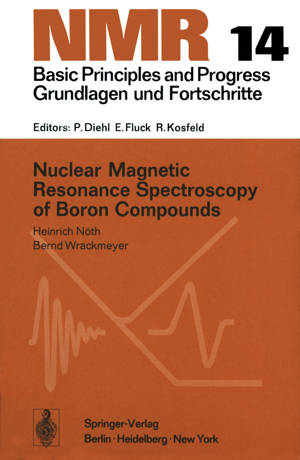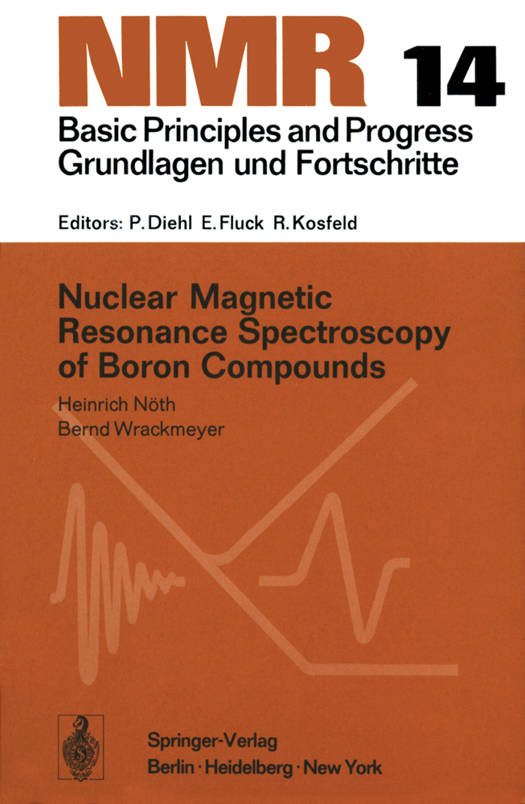
- Afhalen na 1 uur in een winkel met voorraad
- Gratis thuislevering in België vanaf € 30
- Ruim aanbod met 7 miljoen producten
- Afhalen na 1 uur in een winkel met voorraad
- Gratis thuislevering in België vanaf € 30
- Ruim aanbod met 7 miljoen producten
Zoeken
€ 197,99
+ 395 punten
Omschrijving
The revolutionary impetus of the NMR methods in organic chemistry has parallels in the field of boron chemistry. lIB NMR spectroscopy provided a basis for the elucida- tion of structures and reactions of the boron hydrides. However, although many studies have been carried out with the higher boranes, carboranes, metalloboranes, etc., and although certain patterns have emerged, the correlation between the observed chemical shift and the assigned structural unit is still not fully understood. Therefore, predictions in this area are still rather limited, and semiquantitative interpretations are not yet pos- sible. Several years ago Eaton and Lipscomb sUpImarized the status in this field in their book "NMR Studies of Boron Hydrides and Related Compounds" and a plethora of new data has accumulated since then. The book also contained material on simple bo- rane derivatives, but they were not discussed in any detail. On the other hand many systematic studies, both synthetic and spectroscopic, have been conducted on these simple boron materials in the last decade. Thus a large amount of NMR information is available, not only on lIB but also on 1 H, 1 3 C, and 14 N. However, this information is widely scattered in the literature, and often the data are not discussed at all. It see- med appropriate, therefore, to collect these data and to present them in one volume.
Specificaties
Betrokkenen
- Auteur(s):
- Uitgeverij:
Inhoud
- Aantal bladzijden:
- 464
- Taal:
- Engels
- Reeks:
- Reeksnummer:
- nr. 14
Eigenschappen
- Productcode (EAN):
- 9783642667596
- Verschijningsdatum:
- 13/12/2011
- Uitvoering:
- Paperback
- Formaat:
- Trade paperback (VS)
- Afmetingen:
- 170 mm x 244 mm
- Gewicht:
- 757 g

Alleen bij Standaard Boekhandel
+ 395 punten op je klantenkaart van Standaard Boekhandel
Beoordelingen
We publiceren alleen reviews die voldoen aan de voorwaarden voor reviews. Bekijk onze voorwaarden voor reviews.








